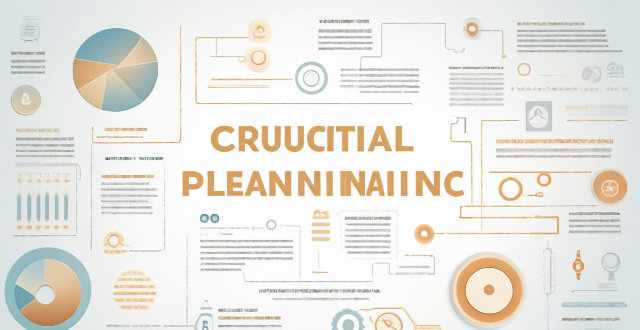Risk management is a crucial aspect of project planning and execution that involves identifying, assessing, and prioritizing potential risks to minimize their impact on the project's objectives, timeline, budget, and quality. The process includes identifying technical, financial, operational, and legal/regulatory risks; assessing their likelihood and potential impact; developing response plans for avoidance, mitigation, transference, or acceptance; monitoring and controlling risks throughout the project lifecycle; and effectively communicating about risks to all stakeholders. By managing risks proactively, projects can navigate uncertainties more effectively, leading to improved outcomes and success rates.

The Role of Risk Management in Project Planning and Execution
Risk management is a critical component of project planning and execution. It involves identifying, assessing, and prioritizing potential risks that could impact the project's objectives, timeline, budget, or quality. By effectively managing these risks, projects can be completed successfully with minimal disruptions and unexpected costs.
Identifying Risks
The first step in risk management is to identify potential risks that could affect the project. This involves analyzing the project's scope, objectives, and requirements to determine what could go wrong. Common types of risks include:
- Technical Risks: These are related to the technology used in the project, such as software compatibility issues or hardware failures.
- Financial Risks: These involve financial uncertainties, such as cost overruns or funding shortages.
- Operational Risks: These relate to the day-to-day operations of the project, including resource availability, supply chain disruptions, or staff turnover.
- Legal and Regulatory Risks: These involve compliance with laws, regulations, or contractual obligations.
Assessing Risks
Once potential risks have been identified, they must be assessed to determine their likelihood and potential impact on the project. This involves assigning each risk a probability (how likely it is to occur) and an impact level (how severely it would affect the project if it did occur). Risks can then be prioritized based on these assessments, with higher-priority risks requiring more attention and resources.
Developing Risk Response Plans
For each prioritized risk, a response plan should be developed. This plan outlines how the risk will be managed if it occurs, including strategies for mitigating the risk, contingency plans for dealing with the consequences, and triggers for implementing the plan. There are four main types of risk responses:
- Avoidance: Change the project plan to eliminate the risk entirely.
- Mitigation: Reduce the probability or impact of the risk through preemptive actions.
- Transference: Shift the risk to a third party, such as through insurance or outsourcing.
- Acceptance: Acknowledge the risk and its potential impact but decide not to proactively manage it, often because the cost of managing it outweighs the benefit.
Monitoring and Controlling Risks
Risk management is an ongoing process throughout the project lifecycle. As the project progresses, new risks may emerge, and existing risks may change in probability or impact. Therefore, regular monitoring and review of risks are essential to ensure that response plans remain effective and appropriate. This involves tracking key indicators, such as milestone completion rates or budget variances, and adjusting risk responses as needed.
Communicating about Risks
Effective communication is crucial in risk management. All stakeholders, including project team members, sponsors, and clients, should be informed about identified risks and their potential impacts. This transparency fosters collaboration in developing response strategies and ensures that everyone is prepared to act if a risk materializes.
In conclusion, risk management plays a vital role in project planning and execution by helping to anticipate and prepare for potential challenges. By systematically identifying, assessing, prioritizing, and responding to risks, projects can navigate uncertainties more effectively, leading to improved outcomes and success rates.